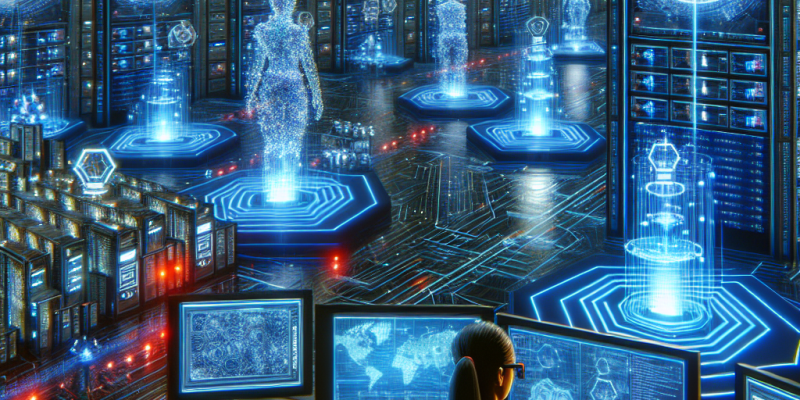The Future of Cyber Defense: Innovative Network Security Solutions for 2025

The Future of Cyber Defense: Innovative Network Security Solutions for 2025
As we move further into 2025, the landscape of cyber defense is rapidly changing. With increasing cyber threats, businesses and individuals must adapt to protect their networks effectively. This article explores some of the innovative network security solutions that are shaping the future of cyber defense.
1. AI-Powered Threat Detection
Artificial Intelligence (AI) is at the forefront of cybersecurity. In 2025, AI-powered systems are becoming more advanced, capable of analyzing huge amounts of data to find unusual patterns that may indicate a cyber threat. These systems can learn from previous attacks and improve their detection methods over time. This means faster and more accurate responses to potential security breaches.
2. Extended Detection and Response (XDR)
Extended Detection and Response (XDR) is evolving to provide a more integrated approach to security. In 2025, XDR solutions combine data from various sources—like endpoints, networks, and cloud applications—into a single platform. This helps security teams get a clearer picture of threats and respond more effectively. With XDR, organizations can detect complex threats that traditional methods might miss.
3. Secure Access Service Edge (SASE)
The rise of remote work has led to the need for Secure Access Service Edge (SASE) solutions. By 2025, SASE is helping organizations protect their networks by combining network security functions with wide area network capabilities. This makes it easier for secure access to applications from anywhere. With SASE, data remains secure even when employees are working remotely.
4. Zero Trust Architecture
Zero Trust Architecture is gaining traction as a standard for cybersecurity. In a Zero Trust model, no user or device is trusted by default, even if they are inside the organization’s network. This approach requires continuous verification of every device attempting to access resources. By 2025, many organizations are adopting Zero Trust principles, making it harder for attackers to gain access.
5. Quantum Computing Security
As quantum computing technology advances, so do the challenges it poses for cybersecurity. By 2025, experts are working on quantum-resistant algorithms to ensure data remains secure against the potential threats posed by quantum computers. This means developing new encryption methods that can withstand even the most advanced computing capabilities.
6. Greater Emphasis on User Education
While technology plays a significant role in cyber defense, human behavior is equally important. By 2025, companies are placing more emphasis on educating their employees about cybersecurity. Regular training sessions, awareness programs, and simulations of cyber attacks help create a culture of security. When employees understand the risks, they become stronger defenders against cyber threats.
Conclusion
The future of cyber defense in 2025 relies on innovative solutions that combine technology, strategy, and human awareness. Embracing AI, XDR, SASE, Zero Trust, quantum computing security, and user education are critical steps organizations must take to protect against evolving threats. By staying ahead of the curve, businesses can create a safer digital environment for everyone. As technology advances, so must our approach to cybersecurity.














